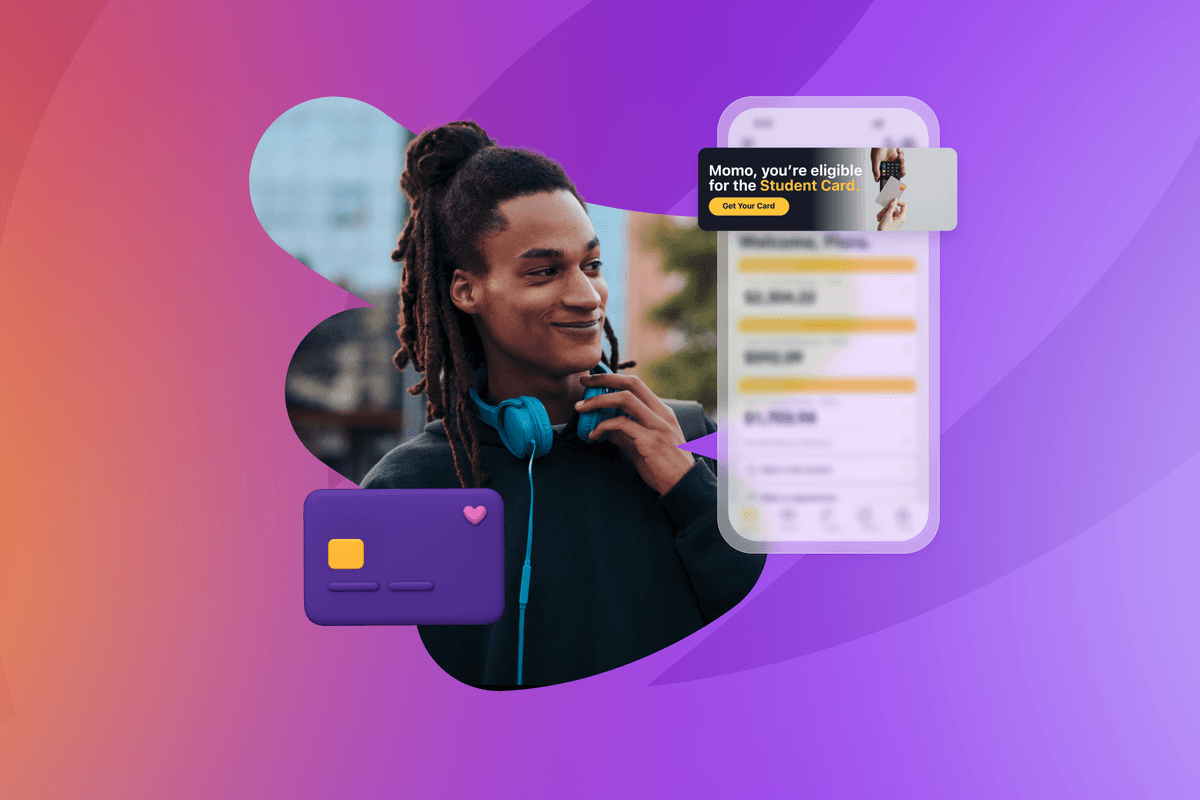3 ways banks can strengthen customer relationships with 1:1 personalization
Published on September 16, 2025/Last edited on September 16, 2025/5 min read


Team Braze
Financial marketers understand the value of customer relationships. The closer you are to customers, the more sway you have over their product mix. A customer with a checking and a savings account, if treated well, is more likely to look to their bank or credit union when they want to take out a car loan or mortgage.
Relationships have been the backbone of consumer banking for decades, or even centuries. As consumer banks moved into the 21st century and more customers moved online, the nature of those relationships changed. Mobile apps and online banking made it more convenient for consumers to complete everyday tasks, but in the nascent days of digital marketing, account holders weren’t getting the personalized services they needed.
Artificial intelligence has changed the landscape of financial marketing. AI can now drive 1:1 personalization that leverages customer data to offer educational content and product recommendations based on the unique needs of every customer. Interest rates are lowering and consumer spending is increasing. Now is the time for marketers to reshape the way they reach consumers, focusing on meaningful conversations with customers that encourage healthy spending and the best product lines for each individual.
Here are three ways marketers can deliver 1:1 personalization and build stronger bonds with customers.
Upleveling the onboarding process
According to Accenture, banks have the chance to boost revenue 20% by offering personalized services and product recommendations. The data collected during the onboarding journey is the foundation to any 1:1 personalization strategy. But 63% of consumers abandon the digital onboarding process.
Personalization should start with the first onboarding email. Marketers can create surveys that can help understand a customer’s financial goals. They can gamify the onboarding process with personalized updates, helping customers finish filling out their profile, signing up for paperless billing, and even offering personalized early cross-sell opportunities.
Customers want a simple, frictionless onboarding experience tailored to their financial goals. Anything less and banks are leaving money on the table. When marketers create personalized experiences, they can tailor product recommendations and financial advice, increasing CLV while helping each customer make more informed decisions.
Artificial intelligence can help solve the problem. Imagine a typical debit card activation email. Marketers want customers to start using their debit card early and often. Marketers can more effectively reach new members with 1:1 campaigns that automatically adapt to the member’s preferences with subject lines, send times, and content all built on a unique customer’s engagement preferences. Doing so can quicken the time to activation and cement a relationship with the customer.
Recognizing every customer journey
Digital banking allows every customer to follow the journey that works best for their needs, their money, and their financial plans. For years, marketers attempted to map every possible online journey in hopes of reaching customers where they are and increasing customer satisfaction. And with good reason: McKinsey research found banks that prioritize customer satisfaction “lead in financial metrics such as total shareholder return, increased growth, and decreased cost.”
With the proliferation of digital banking, customer journey mapping feels like a daunting task. The same McKinsey research found that a typical regional bank has more than 1,500 customer journeys across all product and business units. Marketers creating frictionless experiences and personalized touchpoints need technological solutions to manage the sheer number of journeys available. New AI tools are making it possible to design true 1:1 journeys.
Personalize the customer relationship
Almost 70 percent of banking customers want personalized financial advice. These customers are willing to trade first- and zero-party data for tailored content meant to help them spend, save, and invest better. That provides a pivotal opportunity for marketers. By developing long-term relationships with customers, one built on myriad campaigns and content, marketers build trust and increase customer lifetime value.
To give customers the kind of advice they want, marketers must understand the wants and needs of every customer and offer content that helps them meet their financial goals. Say a customer has researched mortgages on their bank’s website. Marketers can create campaigns that automatically send content encouraging the customer to learn more about buying a home.
Relationships aren’t always about selling. Sometimes, marketers need to identify a customer’s financial interests and help build trust through personalized advice before offering products. As marketers build trust through 1:1 advice, they also understand how, when and where to offer the right products to customers.
1:1 personalization with AI decisioning
Banking customers want personalization across every platform, touchpoint, and digital interaction. As marketers look to scale sophisticated 1:1 personalization, they will inevitably wonder how AI can fit into their tech stack.
AI and machine learning (ML) have rapidly evolved as essential tools in a marketer’s arsenal. One common method of using AI models to personalize are called next best action (NBA) models, which combine predictive models and business rules to predict the product to offer or action to suggest to a customer. To validate that their rules are working, marketers run manual A/B or multivariate tests.
As financial services companies begin to recognize the limits of traditional NBA, a new application of ML called AI decisioning has begun to emerge. AI decisioning relies on a different type of ML, reinforcement learning, which is best-fit for making 1:1 decisions. An AI decisioning agent chooses the best action to take for each individual, and then autonomously experiments and continuously learns from future customer actions.
To learn more about AI decisioning, read our white paper on trends in personalization in financial services.
Be Absolutely Engaging.™
Sign up for regular updates from Braze.
Related Content
View the Blog
The new inbox reality: How iOS changes are reshaping email marketing

Aparna Prasad

Experience optimization: Turning data insights into better journeys

Team Braze

December 2025 Bonfire Marketer of the Month: Jagex’s Emma Oliver
